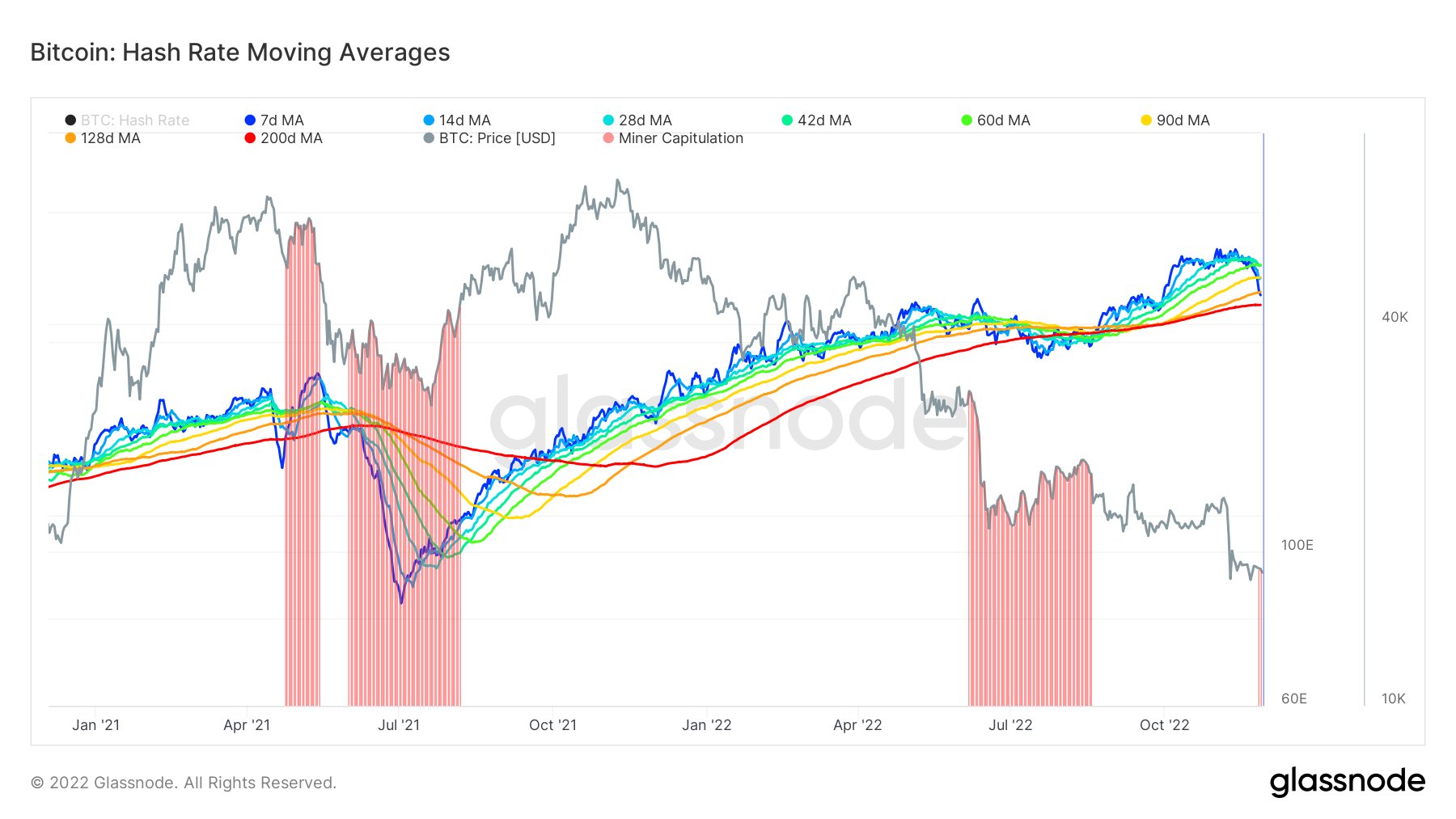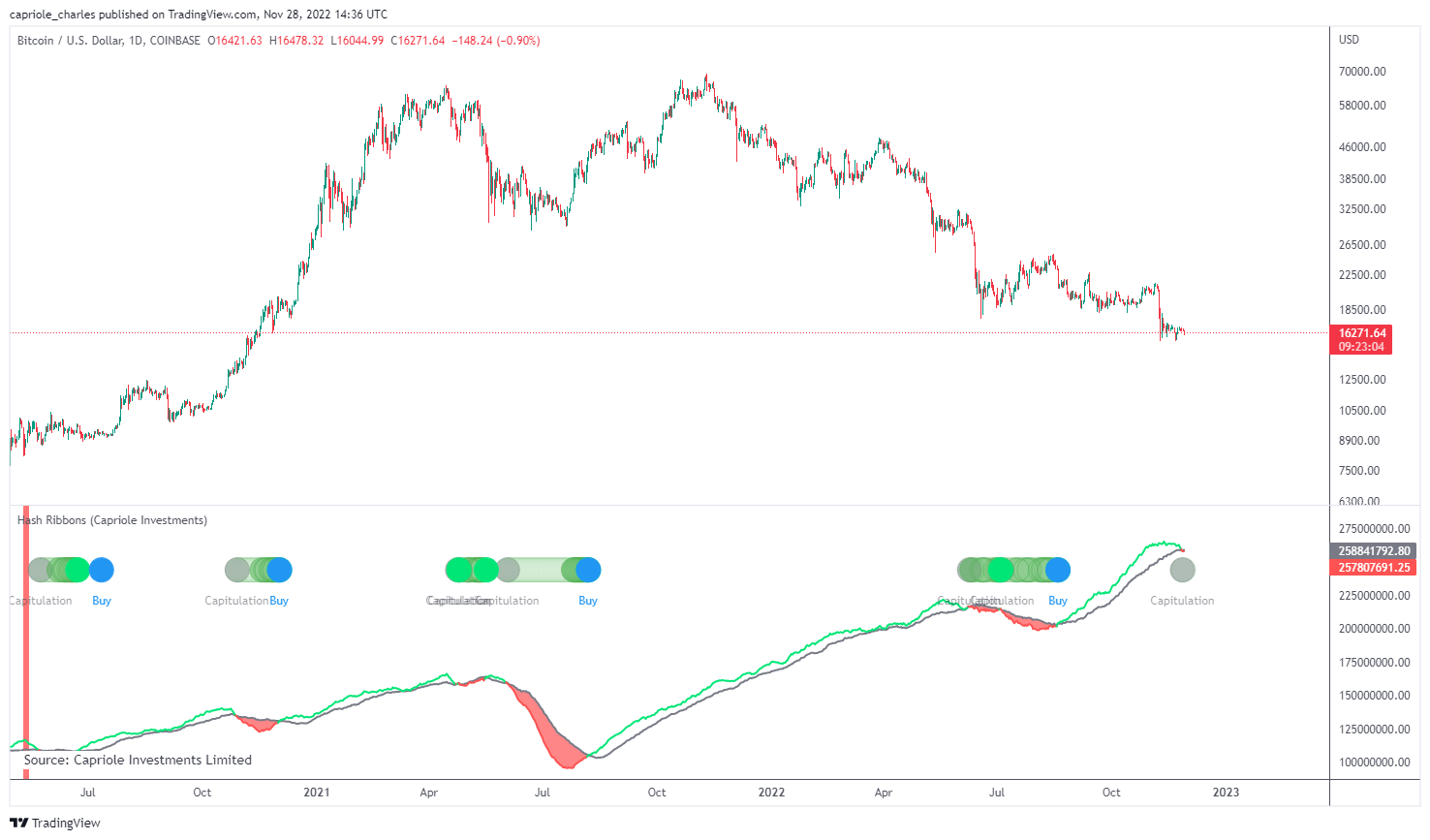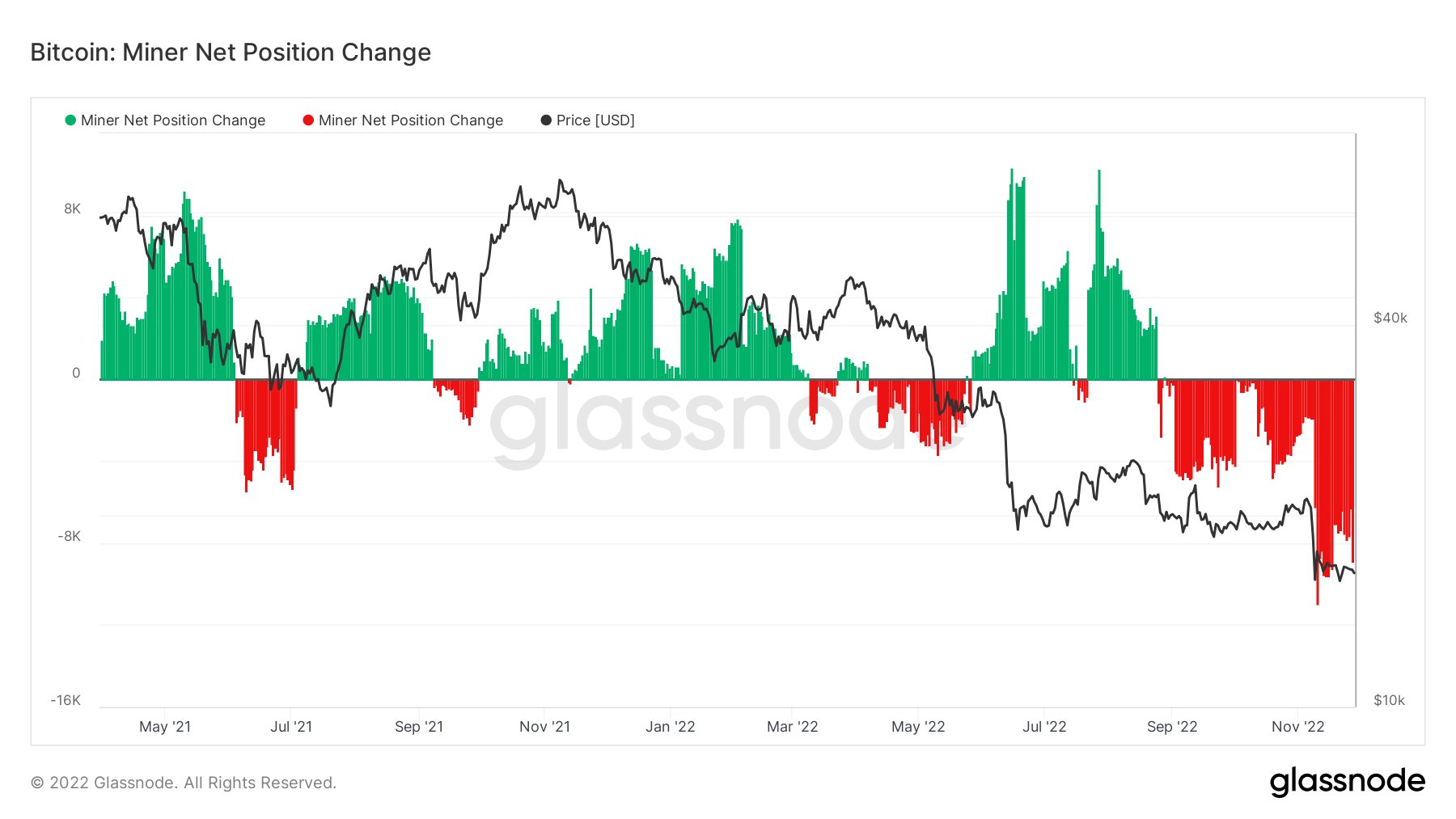
Join us as we discuss the current state of the crypto market, particularly in terms of the current bear market and Bitcoin mining. Hosting the show will be Ray Salmond, head of markets at Cointelegraph, and our special guest this week is Drew Vosk.
Cryptocurrency Financial News

Join us as we discuss the current state of the crypto market, particularly in terms of the current bear market and Bitcoin mining. Hosting the show will be Ray Salmond, head of markets at Cointelegraph, and our special guest this week is Drew Vosk.

Microsoft now requires users to obtain a written pre-approval from the firm in order to use Microsoft Azure for mining cryptocurrencies like Bitcoin.

Bitfarms has an initial period of 180 calendar days to have its shares trading above $1 for at least 10 days before June 12, 2023.

According to the mining firm, “inadvertently published materials” led to the suspension of trading of Argo Blockchain on the London Stock Exchange and Nasdaq on Dec. 9.

The 2022 bear market is impacting BTC miners in more extreme ways than previous downturns, especially with so many publicly listed miners struggling with their debt obligations.

The Russian central bank supports the idea of legalizing the crypto mining business, but only if miners sell their coins to non-residents of Russia.

CEO Adam Back said the fresh funding will be invested into expanding the firm’s mining capacity.

Bitcoin mining difficulty has dropped by its biggest margin since July 2021 amid difficult conditions for miners.

Bitcoin gets a boost from a declining U.S. dollar, but BTC price action is anything but straight bullish, say analysts.
Litecoin (LTC) was among the few bright spots for the crypto market which had to endure the negative effects of the collapse of the FTX exchange platform.
In the midst of one of the worst implosions that the space has ever witnessed, LTC momentarily became vulnerable, plummeting all the way down to $49.58.
But the cryptocurrency stood its ground, though, while the likes of Bitcoin and Ethereum were sent crashing to various monthly lows and eventually commenced its own rally to close November on a high note.
As a result, Litecoin exited last month with an index price of $76.52 and registered an impressive jump of 24% within a 30-day period.
The altcoin is also performing well during the first days of December. At the time of this writing, according to tracking from Coingecko, the digital coin is changing hands at $83.11, with an uptick of 10.8% in the last seven days.
Aside from the sustained surge in trading price, LTC is also witnessing positive developments in other areas.
For instance, according to data shared by CoinWarz, the asset’s mining hash rate has once again hit another all-time high, peaking at 613.81 TH/s.
Within four months, the Litecoin blockchain has recovered from the decline it experienced back in July, rallying by 64%.

Image: Cryptotelegram
Moreover, as of December 3, the DeFi network has established its highest difficulty level since going online, recording a block height of 2,379,925. The average difficulty of Litecoin blockchain translates to a value of 19.52 million according to Messari.
Meanwhile, profitability was one gray area for the altcoin, as most of its holders were unable to make profit from their investment during the previous month.
As of November 30, LTC had a 30-day moving average of -149,000 for its Network Realized Profit/Loss (NPL). In addition, during the same time, Litecoin had a -28% Market Value to Realized Value (MVRV) ratio.
This indicated that despite the crypto experiencing price growth, in November, some of its investors still held at a loss.
Although LTC managed to block the effects of the crypto market meltdown that was triggered by the FTX implosion, there is a possibility that the asset may experience price correction soon.
According to the forecast of online cryptocurrency information provider Coincodex, this could happen within the next five days with LTC losing almost 8% of its value to change hands at $76.33.
Moreover, 30 days from now, the crypto is expected to recover a bit and trade at $80.75, although this value is also lower than the current one it has.
LTC total market cap at $5.9 billion on the daily chart | Featured image: InsuranceHub, Chart: TradingView.com

Texas combines plentiful and relatively low-energy prices with free enterprise, according to the lawmaker.
Bitcoin and the entire crypto market bleed due to many challenges that have befallen the industry. From the Terra crash and continuous interest rate hikes to FTX implosion, the market hasn’t enjoyed a whole month of positive price trend.
As the investors cry about the loss of investment funds, the miners of Bitcoin struggle to remain afloat. As a result, BTC price has continued to plummet even with the increasing electricity costs for miners’ operations. But, surprisingly, many miners in Russia will buy mining rigs now.
According to Kommersant’s recent report, many miners in Russia are grabbing more Bitcoin rigs in Q4 of 2022. In addition, the researchers discovered that the sale of ASIC rigs skyrocketed at the end of the year. This is surprising given the continuous fall of crypto assets in the market.
On a closer look, it became clear that Russian miners enjoy cheaper electricity costs. In addition, the country provided more affordable electricity for many regions, making it easier for households and businesses in those places to flourish. So, while other miners in countries with high power cost struggle, their Russian counterparts have it more accessible.
Another reason for gathering more ASIC crypto mining rigs is because of the cheap offer for the equipment. As a result, ASIC prices fell in the country, spurring many miners into action to acquire more.
More reason that led to this surge in mining rig purchases was the rising interest in crypto mining as a viable investment opportunity. According to Xive co-founder Didar Bekbauov, bitcoin mining became attractive because of lesser investment opportunities, sanctions, and the high-tech qualifications of many people in the country.
The buying spree started after the Ministry of Finance of the Russian Federation (MiFin) and the Bank of Russia (BoR) agreed to support crypto mining. But they allowed it in regions with more energy allocations, not those with scarce energy supply.
Secondly, Russian regulators introduced a bill to legalize mining and the sale of mined assets in the country. This bill came up in the Russian State Duma, the lower parliament.
Also, financial analyst Vladislav Antony stated that the lower ASIC mining rigs price, which is now close to the production costs, is a good encouragement for new investors. Mining revenues in Russia have increased recently, even with the BTC price recording a near two-year low.

One of the distributors of mining rigs in Russia, Chikot, recorded more sales in October and November. This was different from their Q3 records.
Data shows that Chikot sales in Q1 to 3 were higher than 2021 sales by 65%. By August and October 2022, the hardware price fell by nearly 20% and remained the same for the following months.
As a result, Chikot even recorded a 30% increase in mining rig purchases in one transaction, different from early 2022 records.
Featured image from Pixabay, chart from TradingView.com

Answering the question ‘Who has/had the oldest mined Bitcoin?’ an anonymous member shared a signature dating back to January 2009, just a week after Bitcoin came into existence.

Sam Bankman-Fried was consulted on the capital injection, which was made before crypto prices plummeted.

Bitcoin miners are upping sales, but BTC price metrics hint that a relief rally could be next.

Miners in Russia have likely been increasingly buying crypto ASICs due to reduced prices of mining devices as well as low-cost energy.
Litecoin (LTC) continues to prove its doubters wrong as it weathers the ongoing crypto winter in an impressive way, painting its charts in green and posting significant price increases during the last few days.
At the time of this writing, the 13th largest cryptocurrency with an overall valuation of $5.51 billion, is trading at $76.80 and has gone up by 6% over the past 24 hours according to tracking from Coingecko.
The asset’s seven-day performance is beyond “just good” as it registered an increase of 25.1%. Meanwhile, on a month-to-date (MTD) basis, the altcoin is up by 36%.
What make Litecoin’s current run impressive is that it is happening during the same time when industry frontrunners Bitcoin and Ethereum are struggling to gain any ground to push their respective prices to higher levels.
As it turns out, LTC is not only doing wonders in terms of its trading session performances as it is currently in a “rewarding phase.”
During the last few days, the asset’s Market Value to Realized Value (MVRV) has also reached the point where if holders of Litecoin were to sell their holdings at this very moment, they’ll end up making good profit.
One possible reason for the resurgence of the digital coin might be its mining activity. According to the information shared by the project through its official Twitter account, the asset was among the few proof-of-work digital currencies that were ‘profitable’ during the last few months.
Despite reaching a mining difficulty score of 20.00 M, the profitability of Litecoin miners stood at $60%.
In terms of hash rate, Litecoin witnessed a 13.25% increase compared to last month, indicating that the digital coin’s network is both healthy and growing.
As remarkable as LTC is right now, it is important to note that its current price is almost 13% lower than where it was in November 23 when it tested the $83.36 resistance zone.
This was the result of the altcoin’s Relative Strength Index (RSI) indicator settling at 41.80, putting it in an overbought position as sellers clearly had the advantage.
Another bearish sign for Litecoin is the rate at which it was being transferred from one address to another as it recorded a significant decline compared to that of last week.
The network development activity also has not much to offer as of this time, indicating that developers have nothing new to offer right now.
Finally, according to Coincodex’s forecast, over the next five days, LTC is expected to rise by more than 12% on its way to hitting the $86 marker.
A month from now, however, the cryptocurrency is predicted to lose some of its gains but will still change hands at $77.16 – a value that is higher than its current spot trading price.
LTC total market cap at $5.5 billion on the daily chart | Featured image: Rvo.hu, Chart: TradingView.com
The collapse of the crypto exchange FTX is causing a historic event in the Bitcoin market. Yesterday, on-chain data signaled the second wave of a Bitcoin miner capitulation in one cycle.
Historically, miners have had a massive impact on the BTC price. The now heralded miner capitulation will put further selling pressure on the Bitcoin price, which is experiencing a historically bad November, down 21%.
On-chain data shows that the second wave of miner capitulation has now begun, suggesting further pain for the BTC price. As analyst Dylan LeClair wrote, the Bitcoin hash rate is starting to tilt here.
The 7-day moving average hash rate is now 13.7% away from its all-time high. Mining difficulty is expected to adjust by about -9% in a week, which will take some pressure off miners, at least in the short term.

Nevertheless, miner margins have been and continue to be massively squeezed since June, the first capitulation event in this cycle. Despite this, the hash rate still rose to an all-time high until recently.
This, the increased mining difficulty, and the FTX-related price crash have pushed the hash price to its lowest level since late 2020.
As Capriole Investments’ Charles Edwards noted yesterday, hash ribbons have confirmed the start of capitulation. “Triggered by the $10 billion FTX scam and subsequent collapse, bitcoin miners are now going broke and the hash rate is trending down,” Edwards stated.

In the “Bitcoin miner net position change” chart, it can be seen that miners have been selling aggressively over the past month.
“Combined with the decline in the hash rate and today’s hash band bear cross, this suggests that we are indeed in a phase of miner capitulation,” said Will Clemente of Reflexivity Research.

Something to keep in mind is that miner capitulation is usually the last stage of a Bitcoin bear market. In the 2018 cycle, the BTC hashrate continued to rise as the price reached the $6,000 mark until the final miner capitulation came at $3,000.
In the current cycle, miners have already undergone a capitulation in June. They reduced their holdings by 4,000 BTC, equivalent to about $68 million, in the last two weeks.
Prior to that, they had only begun a net accumulation trend in September 2022, betting that the bottom had been reached. However, they bet on the wrong horse and are now being severely punished.
Historically, miner capitulation has lasted an average of 48 days, which would put an end to miner selling pressure in sight by mid-January 2023.
However, the most recent capitulation ended only after two months, on August 18. The end marked the third longest capitulation in history. Bitcoin bulls should therefore be cautious in December and January, and watch the behavior of Bitcoin miners.
At press time, BTC saw a slight uptick and was trading at $16,481.

Many crypto investors are still skeptical about the profitability of Bitcoin mining. This is not surprising considering the growing rate of energy prices in recent times. Moreover, the Bitcoin miners’ revenue has been on a downtrend since November 2020.
Meanwhile, BTC miners are experiencing some downturn in their revenue lately. This situation results from reduced prices and the present bearish state of the crypto market. It’s not overly surprising to miners, seeing that the token’s value against the dollar is going down the drain.
As of November 2021, Bitcoin miners recorded the highest revenue ever had. But information from Blockchain.com showed that these BTC miners’ revenue had dropped significantly since its peak surge.

The Bitcoin miners’ revenue is now down to its lowest value since November 2020. At the time of writing, the figure stands at a little over $11.67 million.
While this downtrend is primarily due to the plummeting price of the BTC token, other metrics also contribute to the occurrence. A noteworthy example is the growing energy prices. Another instance is the decline in the profitable days of Bitcoin. Around 83.40% decline in the profitable days has already been recorded.
BTC holders have witnessed approximately 3,738 days of profits since 2015. On the opposite side, Bitcoin holders would have gained little or nothing for about 747 days in the same period. At the time of writing, BTC trades at $16,146 showing a 24-hour change of -1.72%.

The working process of BTC mining is simpler than it sounds. However, it demands the right understanding from intending and existing miners. Primarily, Bitcoin miners guess a 64-digit number called a hash. In most cases, it’s termed hash mining.
Miners depend on powerful computers to quickly guess this 64-digit number (hash). There are about 16 possibilities for every digit in the number. They consist of digits 1 to 10 and letters A to F.
Generating a guess involves rolling a die having 16 sides 64 times. This action alone only generates one guess. Miners still have many more possible answers, and this is where they need their mining systems.
These computers roll the 16-sided die at a very high speed with lots of computer energy. The reward for mining goes to the miner who first arrives at the right hash – adding a block to the Bitcoin blockchain. The continuity of this process and the price of BTC add up to the revenue of these BTC miners.


Bitcoin miners face a shakeout, one metric warns as the November monthly close looms for BTC.